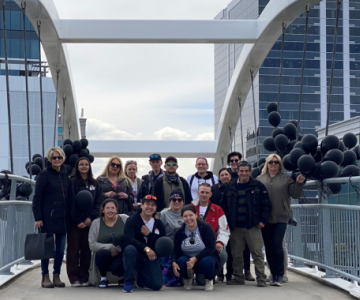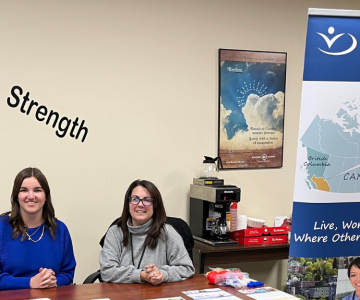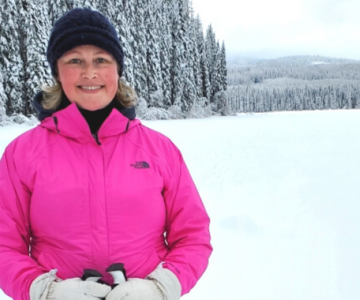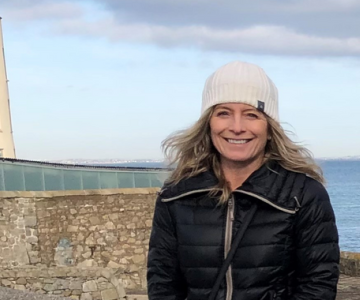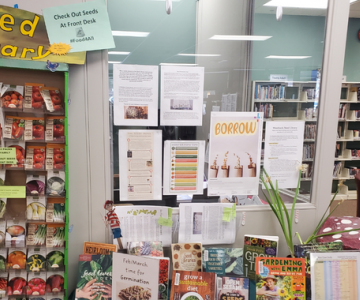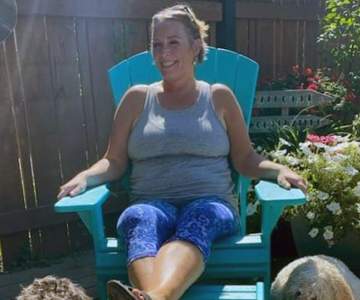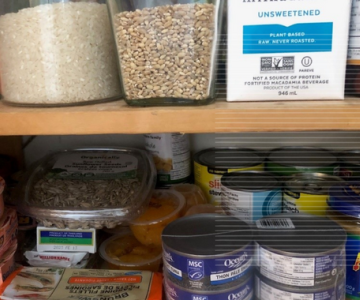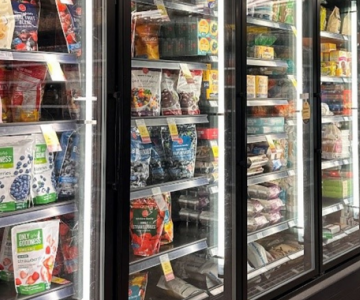Breadcrumb
Explore Stories
Community & Culture
On April 14, 2016, the increasing number of deaths related to toxic drugs prompted the Province to declare a public health emergency. Six years later, more than 1,877 community members have been lost to toxic drugs within Interior Health.
As this crisis moves into its seventh year it continues to take a toll on those left behind - mourning loved ones, friends, family, clients and patients.
Those on the frontline providing substance use and harm reduction services are not immune to this emotional toll.
Read their personal reflections of loss and hope as we mark this sombre anniversary.
Community & Culture
Name: Dr. Glenn Gill (he/him/his)Job Title: Obstetrician and gynecologistYears of Service: 20Worksite: Cariboo Memorial Hospital (CMH)Community: Williams LakeAncestral Territory: Tsilhqotin, Secwepemc TerritoryFavourite Quote / Advice to live by: “In everything do to others as you would have them do to you…” Matthew 7:12
When Dr. Glenn Gill was two years old, he travelled with his parents to India on the Queen Mary ocean liner. For the next 10 years, his father worked as medical missionary doctor in a jungle hospital.
The same year he arrived in India, Dr. Gill was bit on the face by their rabid pet dog. He received 21 days of rabies vaccine injections in the abdomen, which saved his life. “I definitely am a believer in vaccines!” he laughs.
Born in Toronto, he’s a husband and father of three grown children, and is a grandfather to four.
Community & Culture
New financial incentives are in effect to attract health-care staff to Grand Forks, which has experienced ongoing critical staffing challenges. The incentives are available through the Ministry of Health and Interior Health (IH).
“These incentives are part of our commitment to local patients and to our current staff and physicians who have remained steadfast in their dedication to Grand Forks and Boundary communities during these challenging times,” said Dr. Shallen Letwin, vice president of clinical operations, IH South.
Community & Culture
Name: Stephanie Rodgers (she/her/hers)Job Title: Interim Director Laboratory Quality, Safety and InnovationYears of Service: 16Worksite: Kootenay Boundary Regional HospitalCommunity: CastlegarAncestral Territory: SinixtAdvice to live by: I live by my Rodgers family rules: be kind, have patience, show respect, forgive and forget, eat healthy, go outside, and love one another.
Congratulations to Stephanie Rodgers, a medical laboratory technologist (MLT) who was appointed to the role of interim director, laboratory quality, safety and innovation!
Stephanie was born in Vancouver and raised in Richmond, B.C. She’s lived in Castlegar since 2007, located on the Sinixt Nation territory.
Stephanie considers herself approachable, knowledgeable and compassionate.
“I take pride in my work; I have a strong work ethic. I am dedicated to lifelong learning and want to learn as much as I can about the world we live in.”
Community & Culture
Name: Linda French (she/her/hers)Job Title: Community nurse/long-term care case managerYears of Service: 27Worksite: KirschnerCommunity: Central Okanagan-SouthAncestral Territory: Sylix OkanaganFavourite Quote / Advice to live by: Life is too short to drink bad wine.
Throughout her health-care career, Linda French has done her part for the community.
Linda, who was born in Scarborough, Ont. but grew up in North Delta, B.C., started her nursing career at BC Children's Hospital in pediatric cardiology. She worked at Kelowna General Hospital in pediatrics from 1994-1997 and then transferred to community nursing in 1997. She now serves as a community nurse/long-term care case manager for the Central Okanagan-South.
“I have been enjoying this challenging role for 26 years,” Linda said. “I’m an active girl who can't sit still and loves a challenge.”
Health & Wellness
Guest post by Alexis Blueschke, RD, a public health dietitian for Interior Health.
Have you ever planted a seed and watched it grow? Last year, I planted a tiny tomato seed and it was magical. I watched a single seed grow into a six-foot-tall plant, heavy with red, ripe tomatoes, in the span of four months. Growing your own food is a great way to learn about food and sustainability.
Around the world, and here in B.C., there are organizations and groups working to support and transform our food systems. By growing our own food, taking advantage of local programs, and staying up-to-date on local and global initiatives, we can do our part to ensure a secure food future.
Community & Culture
Name: Kristin Lockhart (she/her/hers)Job Title: Manager, Clinical Operations, Kootenay Boundary Regional Hospital, Daly Pavilion, Harbour House and McKim CottageYears of Service: 26Community: Works in Trail and Nelson; lives in CastlegarAncestral Territory: Syilx, Sinixt and Ktunaxa NationsFavourite Quote / Advice to live by: Choose to be kind despite the hard challenges, as we never truly know what is going on for another person and we are all in this together.
Kristin Lockhart is a registered nurse (RN) of 26 years. She feels blessed to have worked in a number of positions with Interior Health, both in frontline and leadership, and her true career passion is working in mental health and substance use (MHSU).
Health & Wellness
Guest post by Lisa Pritchard, a UBC Dietetics student.
With the cost of food still rising, throwing out uneaten food and unused ingredients is not only frustrating, but expensive. Since February 2022, year-over-year grocery prices have risen more than 11 per cent in B.C., with the price of fresh vegetables rising 13.8 per cent. Yet it’s estimated that Canadians throw away 30 per cent of the food they purchase.
With a little planning, we can make sure that the food we buy doesn’t go to waste. Here are some tips to reduce food waste, reuse leftovers, compost, and get the most from grocery shopping and cooking.
Health & Wellness
Guest post by Zoe Maika, a UBC Dietetics student
As dietitians, we encourage everyone to eat vegetables and fruit year-round. Fresh fruit and vegetables have long been many consumers’ first choice. But with the price of fresh vegetables up 15.9 per cent since December 2021, you may want to head to the frozen food aisle more often.
If you’re craving a crunchy apple or some fresh veggies with dip, fresh produce is the way to go. But if you want to make a nutritious meal and don’t feel like splurging in the produce section or spending time chopping, a trip to the frozen aisle is in order.
Here’s why:
-
Load More
Showing 351 of 786
Sign up for email updates
Receive news, alerts, public service announcements and articles right to your inbox.


